Sources
- JCS Pub 1-02, DOD, NATO
| This military-related article is a stub. You can help Wikipedia by expanding it. |
A relief in place is a military operation whereby the relieving unit or formation replaces the force being relieved on a more or less one-for-one basis in situ and takes over its mission and assigned zone of operations. Once the relieving forces have been briefed on the situation and ground, the relieved troops then withdraw.
The relief in place is thus distinguished from other types of relief operation such as the "relief by forward passage of lines" and "relief by rearward passage of lines" whereby the incoming unit passes through the in-place force and takes over the mission from a position respectively ahead of or behind the existing troops.
Relief, as a military term, refers to the breaking of a siege or an encirclement by an outside force. Relief may occur in conjunction with a breakout. It is one of four possible conclusions of investment, the others being a breakout, surrender or reduction. The force that effects relief is known as the "relieving force". Following relief, the town or fortification is said to have been "relieved".
| This military-related article is a stub. You can help Wikipedia by expanding it. |

The Italian Armed Forces encompass the Italian Army, the Italian Navy and the Italian Air Force. A fourth branch of the armed forces, known as the Carabinieri, take on the role as the nation's military police and are also involved in missions and operations abroad as a combat force. Despite not being a branch of the armed forces, the Guardia di Finanza is part of the military and operates a large fleet of ships, aircraft and helicopters, enabling it to patrol Italy's waters and to eventually participate in warfare scenarios. These five forces have military status and are all organized along military lines, comprising a total of 350,000 men and women with the official status of active military personnel. The President of the Italian Republic heads the armed forces as the President of the High Council of Defence established by article 87 of the Constitution of Italy. According to article 78, the Parliament has the authority to declare a state of war and vest the necessary powers in the Government. The Italian Armed Forces are in eighth place as best armed forces.

Airborne forces are military units set up to be moved by aircraft and "dropped" into battle, typically by parachute. Thus, they can be placed behind enemy lines, and have the capability to deploy almost anywhere with little warning. The formations are limited only by the number and size of their aircraft, so given enough capacity a huge force can appear "out of nowhere" in minutes, an action referred to as vertical envelopment.

Operation Telic was the codename under which all of the United Kingdom's military operations in Iraq were conducted between the start of the Invasion of Iraq on 19 March 2003 and the withdrawal of the last remaining British forces on 22 May 2011. The bulk of the mission ended on 30 April 2009 but around 150 troops, mainly from the Royal Navy, remained in Iraq until 22 May 2011 as part of the Iraqi Training and Advisory Mission. 46,000 troops were deployed at the onset of the invasion and the total cost of war stood at £9.24 billion in 2010.

Operation Dragoon was the code name for the Allied invasion of Southern France on 15 August 1944. The operation was initially planned to be executed in conjunction with Operation Overlord, the Allied landing in the Normandy, but the lack of available resources led to a cancellation of the second landing. By July 1944 the landing was reconsidered, as the clogged-up ports in Normandy did not have the capacity to adequately supply the Allied forces. Concurrently, the French High Command pushed for a revival of the operation that would include large numbers of French troops. As a result, the operation was finally approved in July to be executed in August.
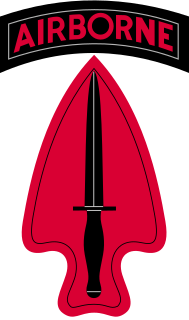
The 1st Special Forces Operational Detachment-Delta, commonly referred to as Delta Force, Combat Applications Group (CAG), "The Unit", Army Compartmented Element (ACE), or within JSOC as Task Force Green, is an elite special mission unit of the United States Army, under operational control of the Joint Special Operations Command. The unit is tasked with specialized missions primarily involving hostage rescue and counter-terrorism, as well as direct action and special reconnaissance against high-value targets. Delta Force and its maritime counterpart, the U.S. Navy's SEAL Team Six are the U.S. military's primary counterterrorism units. Delta Force and DEVGRU perform the most complex, classified, and dangerous missions in the U.S. military, as directed by the U.S. National Command Authority.

The 1st Airborne Division was an airborne infantry division of the British Army during the Second World War. The division was formed in late 1941 during World War II, after the British Prime Minister, Winston Churchill, demanded an airborne force, and was initially under command of Major-General Frederick A. M. Browning. The division was one of two airborne divisions raised by the British Army during the war, with the other being the 6th Airborne Division, created in May 1943, using former units of the 1st Airborne Division.

III Corps is a corps of the United States Army headquartered at Fort Hood, Texas. It is a major formation of the United States Army Forces Command.
Events in the year 1857 in India.

1st Battalion, Royal Australian Regiment is a regular motorised infantry battalion of the Australian Army. 1 RAR was first formed as the 65th Australian Infantry Battalion in 1945 and since then has been deployed on active service during the Korean War, the Malayan Emergency, the Vietnam War and more recently in Somalia, East Timor, Iraq and Afghanistan. Additionally, the battalion has deployed on peacekeeping operations to a number of countries including Japan, East Timor and the Solomon Islands. In 2006, 1 RAR was one of the Australian Army's most heavily deployed units sending detachments to Iraq as part of SECDET, Tonga, the Solomon Islands and Timor Leste. The battalion is currently based at Townsville, Queensland, where it forms part of the 3rd Brigade.
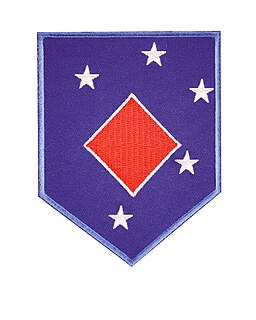
2nd Assault Amphibian Battalion Now known as 2nd Marine Amphibian Battalion is a mechanized battalion of the United States Marine Corps. Their primary weapon system is the Amphibious Assault Vehicle supported by the Amphibious Combat Vehicle they are part of the 2nd Marine Division and the II Marine Expeditionary Force. The unit is based out of the Camp Lejeune, North Carolina

The 123d Airlift Wing is a unit of the Kentucky Air National Guard, stationed at Louisville International Airport, Kentucky. If activated to federal service, the Wing is gained by the United States Air Force Air Mobility Command.
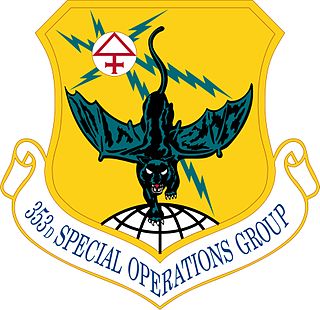
The 353rd Special Operations Group is an operational unit of the United States Air Force Special Operations Command. It is stationed at Kadena Air Base, Japan.

The 373d Fighter Group is an inactive United States Army Air Force unit. Its last assignment was with First Air Force stationed at Mitchel Field, New York. It was inactivated on 7 November 1945.

The 62d Operations Group is a United States Air Force unit assigned to the 62d Airlift Wing. It is stationed at McChord Air Force Base, Joint Base Lewis-McChord, Washington.

The First Battle of Hanna was a World War I battle fought on the Mesopotamian front on 21 January 1916 between Ottoman Army and Anglo-Indian forces.

The Special Troops Battalion, 3rd Brigade Combat Team (BCT), 10th Mountain Division was a special troops battalion of the United States Army headquartered at Fort Drum, New York. It was the organization for the command elements of the 3rd Brigade Combat Team, 10th Mountain Division. The battalion contained the brigade's senior command structure, including its Headquarters and Headquarters Company (HHC), as well as military police, engineering, intelligence, and communications elements. An inactivation ceremony was held on 24 October 2014 on Magrath Field, Fort Drum, NY to mark the inactivation of the battalion. The 3rd Brigade held its inactivation ceremony on 14 August 2014 to mark its inactivation.
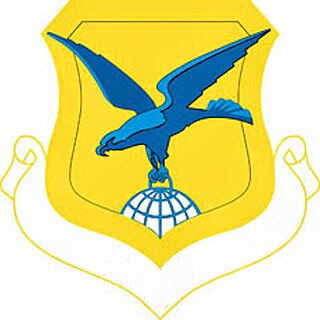
The 436th Operations Group is an active United States Air Force unit. It is the flying component of the Eighteenth Air Force 436th Airlift Wing, stationed at Dover Air Force Base, Delaware.

The 434th Operations Group is an active United States Air Force Reserve unit. It is the flying component of the Fourth Air Force 434th Air Refueling Wing, stationed at Grissom Air Reserve Base, Indiana.
The British Indian XXXIII Corps was a corps-sized formation of the Indian Army during World War II. It was disbanded and the headquarters was recreated as an Army headquarters in 1945.
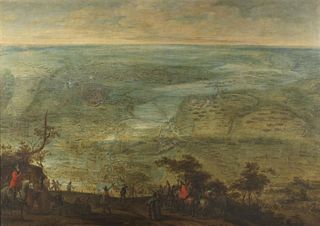
The Siege of Saint-Omer was a siege in the Thirty Years' War in which a French army under Gaspard III de Coligny, Maréchal de Châtillon, laid siege to the Flemish city of Saint-Omer, defended by a small garrison in command of Lancelot II Schetz, count of Grobbendonck. Despite several initial successes in the capture of the minor forts around Saint-Omer, on the night of 8/9 June a Spanish relief army under Thomas Francis, Prince of Carignano surprised Châtillon's troops and established a small fort in the middle of the French lines. An entire army corps under Maréchal de La Force was ordered to move towards Saint-Omer to support Châtillon siege, but on July 12 a further Imperial-Spanish force commanded by Ottavio Piccolomini entered Saint-Omer, resolving the French marshals to withdraw.